The greatest advance in Formula 1 technology during the last 50 years was arguably the arrival of carbon fibre chassis in 1981 – pioneered by John Barnard, then technical director of McLaren during the early eighties. In one swoop he revealed that was faster, lighter and safer than its competitors. The MP4/1 turned F1 upside-down: out when cutting, shutting and welding; in came the space age.
The competition reacted with alarm, for they knew that this material was the future; that they, too, would need to react and embrace composites, or sink. Within two years every serious team had followed suit – to greater or lesser degrees – but still McLaren won the 1984-86 titles with evolutions of the original design.No alloy car would win another title, and since June 1982 only four Formula 1 drivers have suffered fatal injuries in a grand prix car. Barnard later admitted his peers “thought we were mad”, while the legendary Lotus design genius Colin Chapman doubted a sufficiently strong (read ‘safe’) car could be built from heated composite strands.
Thus, the introduction of carbon fibre chassis took immense courage on the part of Barnard. Indeed, until John Watson comprehensively proved the ‘crash-ability’ of such a complex structure at Monza in 1981 by stepping out of his destroyed car, there were widespread doubts about the safety of such chassis.
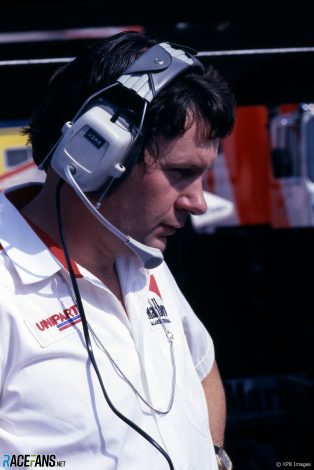
The latest – but unlikely to be the last – driver to benefit from Barnard’s vision was Romain Grosjean last November in Bahrain. True, as outlined here a number of factors contributed to the Haas driver’s ability to step almost unscathed from his burning car, but the immense strength of its carbon composite monocoque no doubt played a critical role.
Fast forward 20 years and imagine Barnard introducing the structure to F1 during pre-season testing. Imagine the constant bickering, shouts of illegality, complaints that composites are not in F1’s DNA, claims that such constructions are unsafe; above, calls for bans of such materials on cost grounds amid claims that all teams would be forced to switch to composites, thereby levelling the playing field, but at great cost to all.
Technical directive ‘clarifying’ that ‘material’ referred to in Article 123.abc actually refer to metallic substances and that unless welding in some form is present such chassis are deemed to be unsafe would follow. If such ‘clarifications’ cannot be implemented with immediate effect, then by the soonest possible date. Over-exaggerations, perhaps, but you get the drift…
Within a decade of MP4/1 McLaren commenced developing its F1 road car – still the benchmark by which supercars are measured – while carbon fibre chassis and components have increasingly found their way into structural and aesthetic applications in production cars on account of both their integrity and lightness.
Advert | Become a RaceFans supporter and

This advantage immediately set alarm bells ringing in the paddock; worse, the engine’s incessant drone – revs barely rose as car speeds increased – made for ‘boring’ soundtracks. CVT was summarily banned through regulation changes for 1994 via clauses that demanded between “four and seven gears”, with a sub-clause specifically outlawing CVT by demanding stepped gear changes.
Fast forward again: Under Article 9.8.3 the 2021 technical regulations specify ‘The number of forward gear ratios must be 8’, adding ‘The minimum possible gear the driver is able to select must remain fixed whilst the car is moving’ and ‘Multiple gear changes may only be made under Article 5.21 or when a shift to gearbox neutral is made following a request from the driver.’
These articles have implications beyond CVT as they also effectively outlaw double shift gearboxes of the type fitted to a number of road vehicles, be they high performance sports cars, econoboxes or in between. Although the jury is out as to which is the faster shifter – DSG or F1’s ubiquitous sequential transmissions, which have little road car relevance – the question cannot be answered for regulatory reasons.
The irony is, though, that various hybrid road cars are now specified with CVT, with Bosch currently developing CVTs specifically for battery electric cars. Imagine how much more efficient CVTs and DSGs would be were F1 encouraged to develop such system rather than insist on the blind alley that is sequential shifters.
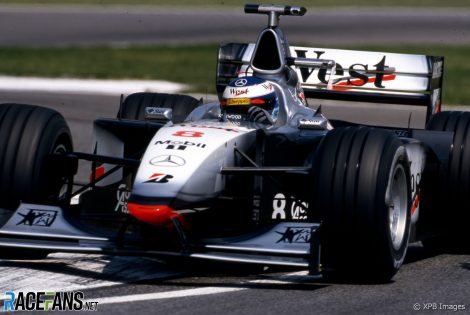
Then energy recovery systems were abruptly banned – on the grounds that F1 cars were permitted only one propulsion system, which of course it does with KERS which merely harvests energy created by previous propulsion – with a full banning clause enshrined in the 1999 technical regulations.
Then, exactly ten years later the FIA – headed by the same president (Max Mosley) – provided for (optional) 80bhp KERS systems as part of the governing growing ‘green’ awareness, yet Toyota, at the time the world’s hybrid drive leader refused to develop such a system on the grounds that the system fitted its Prius was more sophisticated. Newey, by then with Red Bull, also declined, but on weight grounds.
However, from 2013 onwards the electrical portion was doubled, while, as revealed here, F1 is planning for up to 300bhp in hybrid power from 2025. Imagine how much more advanced such systems would by now be without initial regulatory interference.
Advert | Become a RaceFans supporter and
Massed outcries were heard a year ago after Mercedes introduced dual axis steering; previously McLaren’s so-called ‘F-duct’ caused similar controversies, as did Brawn’s double-deck diffuser – both were banned. Yet, the F-duct made a camouflaged return as DRS and 2025’s cars will likely feature elaborate diffusers.
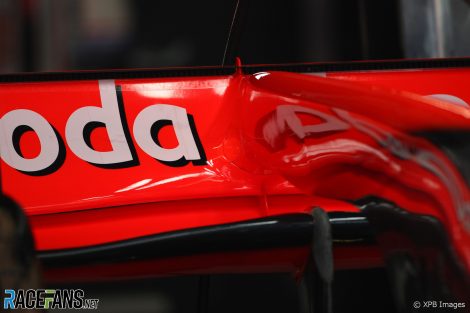
F1 prides itself on (allegedly) being at the cutting edge of technical innovation, yet virtually every advance finds itself banned at the earliest opportunity, whether on technical, sporting or financial grounds. Should any or all of these reasons fail to outlaw a development, then the old fall-backs – detrimental to the ‘show’ – or unending, loud criticism will surely do so.
In most instances the ‘reasons’ forwarded simply mask fears that the competition has created a legal advantage through ingenuity and creativity. F1 needs to learn that genuine competition is vital to the sport’s future, whether these contest are staged on-track or enacted in engineering offices, on mainframes in wind tunnels or autoclaves.
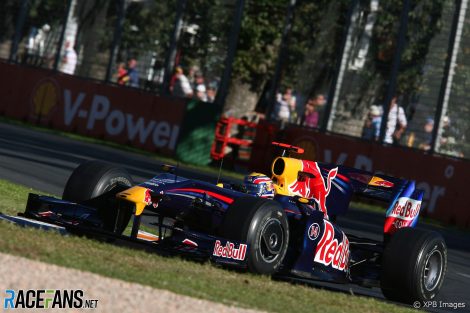
Instead, virtually every paddock figure without an engine division maligned them publicly or refused to provide any details. I recall asking the CEO of an F1 powertrain supplier in 2016 about his product’s thermal efficiencies – the benchmark for engine design. Before he could respond – and thus I have no way of knowing what the answer would be – his PR minder intervened and closed off the topic.
Consider: the company was spending upwards of $300 million annually on its F1 engine operation in order to generate marketing ink and acquire technical expertise in a complex field, yet the most crucial number, the one with by far the biggest ‘wow’ factor, was kept hidden from the media – and thus fans – probably for reasons of confidentiality. Yet any opposition supplier worth its salt knew the numbers in any event!
This secrecy was not, though, maintained for long: around two years later the company abruptly U-turned and proudly bandied about its efficiency indices to all and sundry. Whatever happened in the interim is anybody’s guess, but clearly the company’s policies (and philosophies) changed for the better.
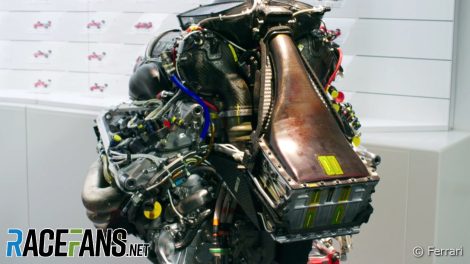
Honda provided the most up-to-date photograph – the picture below is of their 2019 engine. Mercedes offered a 2016 photograph on the basis that it was the latest approved image. Renault provided a picture of their original Energy F1 power unit from 2014.
Make of this what you like about their $300m engine programmes…
Remote ‘garages’ – which enable teams to operate with fewer on-site personnel by linking circuit to base via teleconferencing and telemetry – were recently under threat, allegedly on ‘cost’ grounds. Once the affected teams had proved the technologies were revenue spinners via sponsorships the authorities relented.

All these examples and many more – such ABS, traction control, active suspension, wing cars, turbochargers (banned, then embraced again) slick tyres (ditto) – sprang to mind when a technical directive about so-called ‘bendy wings’ was issued to teams last week. While there are no suggestions that the innovations listed above were invented by or in F1, there are few doubts that such technologies benefitted vastly F1 applications.
Flexible wings reduce drag by presenting ‘flatter’ aerodynamic surfaces at speed, thus boosting speeds on straights before returning to their original positions under braking. What is wrong with that, save that some teams haven’t mastered the technologies or cannot afford them – possibly both?
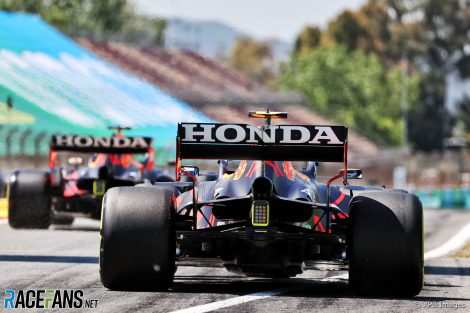
Curiously, in a recent interview for RaceFans F1 chief technical officer Pat Symonds revealed that active aerodynamics are under consideration for F1’s 2025-onwards formula – which has sustainable fuels and increased electrification as its corner stones, making drag reduction imperative if F1 is to maintain (or exceed) impressive lap speeds.
“You don’t have to be an engineer to realise that one of the reasons we use quite a lot of fuel on these cars is because they’re high drag,” Symonds said. “So, the first thing you’ve got to do, apart from the fact that you’re moving into much more hybridisation, is get some drag out of it. That leads you to active aerodynamics on the car.”
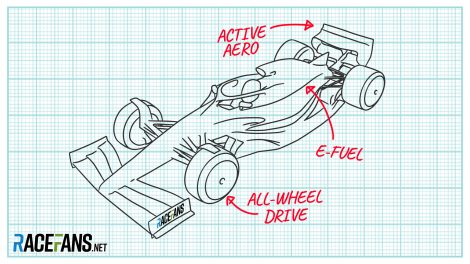
“Advances on the racetrack find their way to the road, helping to preserve lives and the planet,” he said. “This has probably never been as clear as in the response of the community to the global pandemic this year. While motor racing is back on track, providing entertainment for millions of fans, it remains a laboratory for a better future.”
By definition motorsport – in particular F1 – can, though, only be a laboratory if it is granted the freedom to continue developing relevant technologies. Stifling competition for fear of being beaten is a one-way ticket to oblivion.
RacingLines
- The year of sprints, ‘the show’ – and rising stock: A political review of the 2021 F1 season
- The problems of perception the FIA must address after the Abu Dhabi row
- Why the budget cap could be F1’s next battleground between Mercedes and Red Bull
- Todt defied expectations as president – now he plans to “disappear” from FIA
- Sir Frank Williams: A personal appreciation of a true racer




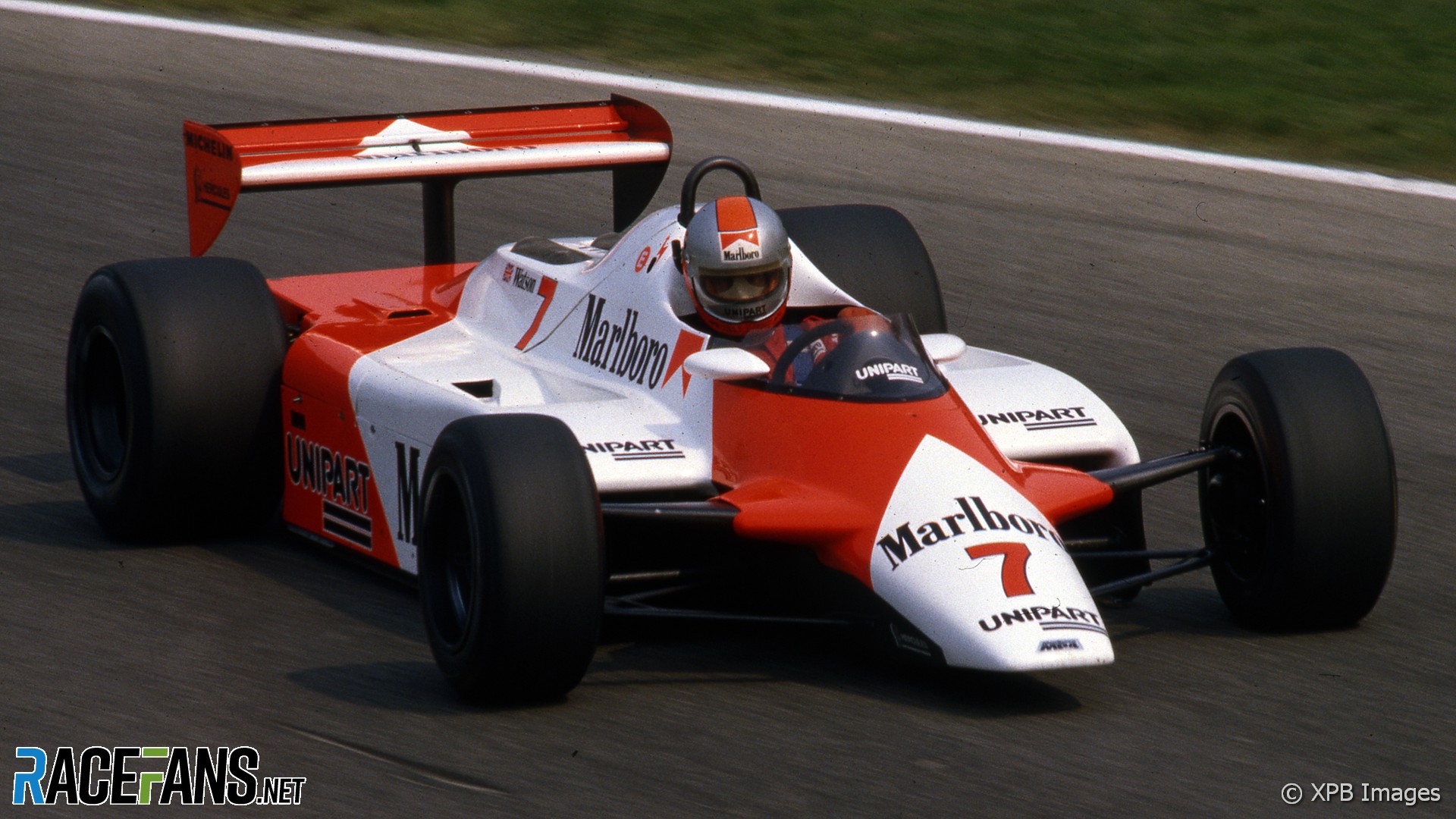

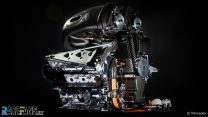
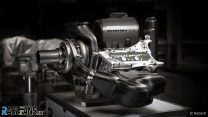
Chris Horton
19th May 2021, 12:10
Good, if innovation is to blame for the current mess then good riddance.
Biskit Boy (@sean-p-newmanlive-co-uk)
19th May 2021, 16:08
Hit the nail on the head Chris.
F1 has been chasing its tail on this for too long. Don’t get me wrong I love the technical aspects of F1, some of its true innovation like ground effect.
The trouble is much of this so called innovation isn’t technical innovation at all. Its just sneaky work arounds and re-interpretations of what are already very arbitrary rules. For example let’s say you wanted a way of warming up your front tyres and you figured an efficient way to do that would be to have a heating element in the wheel or tyre. That would be a cool innovation… but F1 does not allow it. So the sneaky workaround is to reinterpret the rules for steering so the front tyres can scrub across the tarmac at a angle using friction to heat the tyre (DAS). A useless innovation if ever there was one.
We almost need two F1’s.
One where the rules are much freer and innovations can happen all the time, only restricted by safety implications. So costs might go up, close competition down and the drivers make even less of a difference.
And another F1, much closer to a spec series, which is cheaper to enter, has closer racing and allows drivers to make more of a difference.
I know which I’d be watching. What about the rest of you guys?
Chris Horton
19th May 2021, 21:31
Agreed!
Facepalmer
19th May 2021, 12:28
All is well, except bendy materials. They don’t fit in the same line with carbon cockpit, gearboxes or suspension systems.
Crucial difference – bendy wings are banned for quite some time. You can argue that “bendy wings” are not bendy with “current” tests, but this is a deception, ruse, created specifically by certain teams to hide the illegality of such wings.
With all those previously mentioned designs and technologies – teams created something new, which complied with the rules right from the start.
Niki101
19th May 2021, 13:10
@fakepalmer
Hmm, that’s a very odd argument, given that pre 1968 there were no rules banning moveable aero.
I know it’s just a not very veiled dig at RBR, but besides exposing your own stupidity, it really doesn’t hold up.
Colin Chapman created something new, that complied with the regulatiosn, until they rewrote the rules.
Dave
19th May 2021, 14:55
“fakepalmer”? So you were that same person who name called people months earlier with a different name?
Barry Bens (@barryfromdownunder)
19th May 2021, 13:23
It’s not a deception: they actuially comply with the rules. You may simply not like those rules, but that’s not anyone elses problem. The RBR bendy wing is not illegal. It might become illegal when the FIA enforces new tests, but with current limits it’s very legal.
It’s like saying driving 100 km/h is allowed on a stretch of road and then reducing the maximum speed to 80 km/h. Sure, you can’t do 100 km/h anymore or you’d be breaking the limit, but until it is enforced, it’s perfectly fine. Just like Dieter said: it’s the next thing that other teams just didn’t think of and are now complaining because they can’t get it to work (in time). Same could be said for DAS.
Instead of applauding other teams for coming up with ingenious tricks to make a car go faster while staying within limits, other teams now seem bitter they didn’t come up with it first. Rather childish if you ask me.
anon
19th May 2021, 19:18
@barryfromdownunder I would say that it is possible that the wing might pass the current load deflection tests and yet still be illegal, as it would depend on the mechanism that Red Bull has implemented to do that.
For example, the regulations do include clauses that would allow for penalties to be applied if the teams are using materials with non-linear characteristics to get the component to pass the load test, but then to have increased flexibility on track. The wing might meet the load test deflection criteria, but the means by which the team have achieved that performance might be illegal – in which case, you would have to say that the teams would have legitimate grounds to complain.
BasCB (@bascb)
19th May 2021, 15:03
To an extent, the ban on bendy stuff is based on the same reasoning of why ground effect was banned I think:
Because the engineers did not understand what worked and how it worked, and weren’t able to introduce enough control over what they were doing it was potentially VERY dangerous when things (almost inevitably) went wrong.
I think Dieter brings up quite a few solid points to consider when we think about where F1 is headed and what it can mean for the wider world. And with the budget caps in place that should open up options to allow more technical / material freedom again (might be a reason to need more testing allowance though), since the budget cap will still prevent spiralling cost.
Rhys Lloyd (@justrhysism)
20th May 2021, 5:30
@bascb
I don’t believe that at all. The engineers know exactly what is going on. Also the cars themselves are much safer today than they were when ground effects were first introduced.
BasCB (@bascb)
20th May 2021, 8:00
Currently they clearly do know what they are doing @justrhysism.
But when wings were first introduced (1950-60s) and experimented with them a lot and when they first massively used underbody tunnels and skirts etc for downforce nobody really knew what they were doing. Materials were not sturdy or reliable enough and there were no simulation tools available to predict how things were working (including the massive cornering speeds). Those were the reasons why these things were forbidden (as well as the competitive aspects of some having them working, others not).
That is why we could now look at those things again, with all that we now know, understand, are able to simulate and finetune. And give more freedom to try and use them.
Will Wood (@willwood)
19th May 2021, 12:42
A great example of what Dieter is referring to can be heard in this video.
SadF1fan
19th May 2021, 13:23
Interestingly, CVT is a technology that went from consumer cars to race cars instead of vice-versa.
Invented in the 1879, it was DAF that was the first to mass produce it in the form of the variomatic transmission in 1958.
The variomatic transmission can go as fast in reverse as it can go forward, so as a happy side effect reverse driving races were organized with the DAF cars.
BasCB (@bascb)
19th May 2021, 15:05
Thanks @willwood! I can see how a broadcaster might not be keen on that!
Jonathan (@jonathan)
19th May 2021, 12:53
I love the McLaren F1 more than most (and have written articles to that end a few times) but I don’t think anyone still uses it as the supercar benchmark. 1994 was as long ago in terms of road cars as it is for F1 cars, Dieter.
Witan
19th May 2021, 13:12
Great article. And so true. Regulation mania will kill F1 unless much reduced to allow competitive innovation.
elchinero (@elchinero)
19th May 2021, 14:29
“TRUMP” click-bait. Yeeesch.
Biskit Boy (@sean-p-newmanlive-co-uk)
19th May 2021, 15:50
Most regulations are there for safety, cost and to produce a level playing field. Which one of these would you reduce?
@HoHum (@hohum)
19th May 2021, 23:31
Remember that cost reduction has only become important for the purpose of allowing Bernie and his successors to take 10 lions share of the revenue F1 generates.
Biskit Boy (@sean-p-newmanlive-co-uk)
20th May 2021, 9:55
I’m not sure what point you are trying to make.
Cost reduction is important to keep the sport alive. Unchecked costs means teams will leave and F1 will wither and die.
Yes Bernie and others took too much money out of F1, but even if you fix that reducing costs will still have an important part to play.
Steven Robertson (@emu55)
19th May 2021, 13:24
I like to think the field is currently full of innovation but no one want to mention it as Horner would get it banned.
Barry Bens (@barryfromdownunder)
19th May 2021, 13:32
You misspelled Wolff and Szafnauer
RandomMallard (@)
19th May 2021, 16:42
They’re all as bad as each other tbh. Horner wanted engine modes banned, Wolff wants the flexi-wings banned, and Otmar just wants everything other than the Merc W11 banned.
Barry Bens (@barryfromdownunder)
19th May 2021, 13:31
I think one of the big problems with FOM/FIA/F1 in general is that they want conflicting things. On one hand, they want a close field where only the tiniest of margin exists. No gaps of 0.5-2.0 seconds between teams or cars, but every car as close to equal as possible. At the same time they want to be (or remain) the sport that pushes for ‘ being at the cutting edge of technical innovation’. The only way that could remain true is when a team would discover something ingenious and then report it so all teams can adopt it at the same time so the field remains tight. Like yeah, companies that invest hundreds of milions are definately going to be doing that.
I get that the FOM doesn’t want more boring F1-periods such as the years we’ve had since the hybrid era started with 1 team dominating, but that’s exactly why it’s interesting for bright minds to participate. They can make a huge impact by coming up with something smart
nick---0 (@nick-0)
19th May 2021, 13:51
It’s a difficult one. Without restrictions Formula 1 cars would be nothing like they are. They would have entirely covered wheels, a canopy, and the driver would be virtually lying down and wearing a G-suit. There would be active suspension and active aero and the power trains would be totally different. They would be way faster, and too fast for all the circuits and the field spread would be massive.
It’s a good article. It can be frustrating. It’s just hard to find a balance between innovation and racing. After a period of total dominance by one team, I’m quite looking forward to F1 being a bit more restrictive for the next 5+ years.
The idea I would like to push is that qualifying is to show technical innovation, and then the race is for racing. So you would have more complex wings and energy harvesting for qualifying, and then for the race you just take that stuff off, or turn it off. Bit whacky maybe, but I think it is a good idea.
vjanik (@vjanik)
19th May 2021, 16:00
As I mentioned before, I would only have one rule regarding engines: setting a power/torque limit(eg 1000hp) and thats it. Let the teams put whatever engine they want in their car.
Here are a few advantages compared to what we have now. (In no particular order. There are probably more. Interested to hear what are the downsides.)
– breeds innovation: allows many creative designs
– cuts costs: cheaper ways of achieveing the same power
– assure competitive engine: all engines capped at 1000hp
– attractive for manufacturers: testing new technology
– simple to understand: no need for thousands of pages of rules
– variety in power units (V6 turbo, V8, V10, electric, hydrogen, hybrid, etc)
– easy to enforce: FIA monitor torque sensor like in Formula E
– will produce varied race strategies
– reduce the influence of large corporations and engine manufacturers on other teams and on F1 in general
F1 frog (@f1frog)
19th May 2021, 16:02
I don’t think this is the end of innovative breakthroughs in F1. Last year, Mercedes successfully introduced DAS, and although that has now been banned, it did at least last a year. Will we ever see another innovation of the scale of the ‘Brabham fan car (the greatest F1 car of all time)?’ Almost certainly not in the next few years, but surely at some point in the future we will.
@HoHum (@hohum)
19th May 2021, 23:44
@f1frog, As this article says, such an innovation as the fan car cannot be possible, sadly any analysis of all the problems created by aerofoils in F1 (current and banned) suggests that the fan was the best and least expensive way to achieve the desired lower lap times without the detrimental effect on close racing.
RandomMallard (@)
19th May 2021, 16:33
I don’t necessarily think that regulation is killing F1. I think the current state of F1, while not perfect, is probably one of the closest we’ve ever got to a product where:
There are very good safety measures
The cars are very quick
The cars are very efficient
The cars can race relatively well (given the right conditions)
The problem really comes with money now. I think the difference between now and the ‘glory days’ of innovation is the tobacco money. 30 years ago, teams could just throw money at the problem until they could fix it (or until they found a new innovation). The different financial climate nowadays just means that isn’t possible. Aidan Millward covers this quite well in this video.
That said, it has almost reached a stage where the highest honour in F1 car design is having your innovation banned by the FIA. But sometimes they have to ban it, whether that’s for safety, cost or racing reasons. As other people have mentioned, if there were no rules, 2 things would happen:
1. We would have a much larger field spread where F1’s positive feedback loops kill the sport, as the teams who win get more money and therefore do more winning, and the teams that don’t win can’t catch up.
2. We end up in a situation like Group B rallying, where people keep dying and F1/FOM get forced to add regulations because otherwise they would be sued out of existence.
Yaru (@yaru)
19th May 2021, 17:36
I have no issues with making drivers press a button on the steering just to shift a gear up or down……..it is a driving series afterall.
Its not like we are making them use a H stick shifter on the side (in a cramped cockpit) with a third pedal for clutch or anything, thus compromising safety. Pressing a button on a steering wheel is more than enough moderation between ease of use (to enchanse safety) and actually needing to operate the car.
@HoHum (@hohum)
19th May 2021, 23:56
@yaru, but the point is that CVTs would have been rapidly advanced and taken up by manufacturers earlier if F1 had been allowed to use and develop them, I will never buy a CVT car, but that is not the point.
@dieterrencken, Great article, 1 point though, the F1 electro-mechanical gearbox did have a great effect on road cars, it halved the resale value of cars so equipped.
DB-C90 (@dbradock)
20th May 2021, 0:27
A great article again from Dieter.
It was my understanding that the reason so much regulation has appeared in recent times was to try and curtail the massive advantage that the big spending teams had over those with smaller budgets. DAS for example was banned, not because it gave Mercedes a huge advantage but more because it was going to be too expensive for the other teams to copy it if indeed it did give them an advantage.
Fast forward to 2021 and we now have this thing called a budget cap which in itself sets limits on just how “out there” a design team can go.
Surely now F1 can loosen the regulations and allow far more scope for innovation if a team wants to take that sort of risk – if they get a year’s advantage or more so be it.
In reality has the current restrictive environment prevented one team from dominating? Or more to the point, if there had been more scope for innovation, would one of the other teams have caught and surpassed Mercedes quicker?
Rhys Lloyd (@justrhysism)
20th May 2021, 5:34
Surely with budget caps in place, innovations can be opened up once again; given that in most instances, the innovations are banned to try and keep costs under control.
@dieterrencken has there been any indication that this might happen? Or is there something I fundamentally don’t understand with the budget cap?
Hollis Krause (@ugncreative-usergname)
20th May 2021, 7:54
I sometimes think to myself “if wings were introduced to F1 today, the FIA would’ve banned them on sight”. Yes, even if wings didn’t happen when they did, it wouldn’t’ve taken until today, but that’s not the point….
I remember watching the 2020 Italian GP pole lap and being sad when the car topped out halfway down the straights… there are of course many ways the cars could be faster, they aren’t 919 Evos and they aren’t supposed to be, but even though it’s for cost, restricting a setup thing gets to me.
Sure, the alternative to crushing fun innovations is having a series that tends to be dominated by one team, but what has the past decade been anyway….
Tommy C (@tommy-c)
20th May 2021, 11:21
I think the time for truly revolutionary cars died a long time ago. Probably not since the Lotus 78 have we seen a real game changer (maybe renault’s success working out turbo engines but they’d already started by 1978). The banning of ground effect seems to me to be the turning point where the sport could no longer be about making leaps forward in performance. The fundamentals haven’t really changed a huge amount since 1983. Paddleshift gearboxes is the closest I can think of. Everything else has really been tweaking what we already knew and making incremental improvements. The major changes we’ve seen in car design have been down to regulation changes rather than engineering innovation.
Aleš Norský
20th May 2021, 13:43
This is an endless question, really. Sure the list of banned innovations is incredibly long, but good chunk of it does preserve level playin field…at least somewhat. Some 40 years ago, there were have/have not teams as well, but nowhere near the extend it has been over the past 15 years or so. Back then, five race winners from four different teams was regular occurrence every year, compared to only two drivers winning over 60% of all GPs between 2010 and 2020. Hopefully the budget cap will work as intended and bring some real racing back.
RocketTankski
20th May 2021, 22:56
The perfect F1 rulebook has already been written. It says “Formula E” on the front, but they can cover that with a nice sticker.